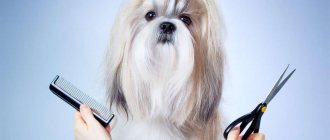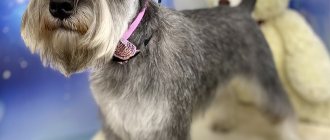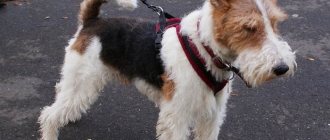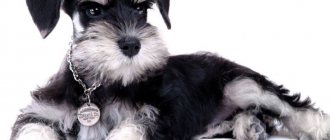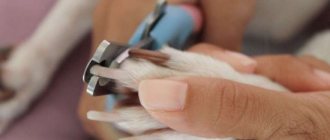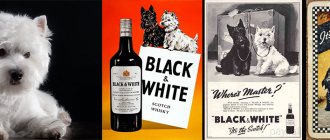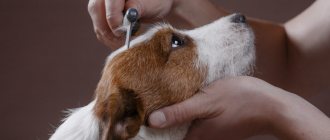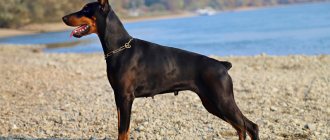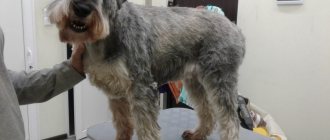During selection, new breeds of dogs appear. Not all of them are adapted to the normal life cycles of animals. For example, some types of dogs with coarse hair have lost the ability to shed. Despite this, the hair wears out and after 4-8 months loses its shine and breaks up into flakes. As a result, the animal looks unkempt and shaggy.
To bring the pet into proper shape, owners trim their dogs. This is a procedure in which dead hairs are plucked out. It is performed in salons by trained professionals. Animals are not trimmed on their own, as this requires special knowledge and skills.
- 1 The need for trimming for a dog
- 2 Haircut or trimming: what are the differences
- 3 Features of trimming
- 4 Types of trimming
- 5 Mr. Tail Recommends: Tools and Equipment for Dog Trimming
- 6 Operation algorithm
- 7 What breeds and how often do you need to trim?
The need for trimming for a dog
The extent to which it is necessary to remove the old coat can be determined by understanding its structure. In dogs, especially hunting breeds, during the process of evolution, the fur was divided into two layers. The lower one, adjacent to the skin, is soft and thick, protects from cold, parasites, and moisture. External - forms a kind of shell that reflects the attacks of winds, sharp branches and opponents.
Since pets are not exposed to aggressive environmental influences, the outer coat remains intact. Over time, it rolls down and turns into a dense, airtight cocoon. If the animal is not trimmed, after a few weeks diaper rash begins to appear on the skin, redness, itching and irritation occur, and infectious diseases caused by pathogenic flora develop.
With proper care, the dog's coat becomes clean and acquires a healthy, shiny appearance. Blood circulation in the skin improves, positively affecting all body systems and the pet’s mood.
Greyhound (Germany, UK)
Tools of this type are suitable for removing hair from dogs of all breeds. They don't trim the fur. Stone knives come in a variety of sizes and have a strong, thin tip for detailed cutting. Convenient for right-handers and left-handers equally. Models with and without a handle, with a straight and beveled tip. For models without plastic trim, the entire length is the working surface. Prices start from 1000 rubles; knives with plastic trim for the handle are more expensive.
Some knives have a wide blade-type working surface. They are designed to remove hair on the stomach and back.
Rock Wood deserves special attention - a lightweight and easy-to-use knife that performs the same tasks as metal or stone knives. The working surface is coated metal (looks like a metal nail file). Rock Wood will be appreciated by groomers who find it difficult or awkward to hold a regular trimming knife.
There are models with a metal handle and a stone working surface, with a narrow tip. The working surface is of different widths for the convenience of processing wool on different parts of the body, including hard-to-reach ones.
Haircut or trimming: what are the differences?
Proper care of an animal's coat is practiced mainly by breeders of champion dogs who take part in exhibitions. Other owners believe that a haircut can get by. It's a delusion.
Cutting the hair at the base does not solve the problem, but makes it worse. The guard hair, which makes up the bulk of the upper cover and needs trimming, consists of two parts, the lower one is thin and soft, the upper one is dense and hard. Shaving off the top leaves a thin root structure that continues to grow.
Over time, dogs that are clipped lose their coat quality. Growing hair looks like fluff, gets dirty faster and becomes tangled. After cutting, the hair structure is not restored. With proper care, that is, by contacting a groomer, it is possible to slightly change the top coat, but it is impossible to completely reverse the process.
Short-haired dogs of wire-haired breeds do not take prizes at exhibitions and, in general, differ from their counterparts in worse appearance.
It is recommended that hair care for cocker spaniels, Yorkies, schnauzers and other representatives of hunting breeds be left to specialists from the first days the animals live in the house.
It is important to understand that cutting is a cosmetic procedure, and plucking is a hygienic procedure.
How to accustom a cat to trimming?
Special pastes and tablets for hair removal help to cope with trichobezoars. However, as usual, it is easier to prevent a problem from arising than to heroically overcome its consequences later. This means that regular trimming should become a habit for both you and your cat.
Accustoming to this procedure should begin as soon as you bring the kitten into the house. We recommend brushing the fur immediately before feeding, so that your pet knows that after the combs, brushes and gentle movements of your hands, a reward in the form of delicious food awaits him.
A pleasant daily ritual creates a bond of interdependence between owner and cat. Kittens perceive trimming as an exciting game, adult animals eagerly await their due portion of the owner's attention, and older cats, no longer able to maintain cleanliness themselves, are simply grateful for the care.
Trimming features
Trimming seems easy only when viewed from the outside. In fact, the procedure requires skill and experience. The cost in salons varies from 1800 to 3800 rubles, depending on the size of the pet. If you want to remove all the hair down to the skin, you pay an additional 2000 rubles on top of the tariff.
Some owners try to carry out the procedure themselves, which leads to bald spots in the dog's coat and an unkempt appearance of the dog.
Depending on the size of the animal and the skills of the groomer, various tools and devices are used during hair removal.
Regular trimming at home is the key to the beauty and health of a cat
Our four-legged pets often also have to suffer in the name of beauty.
Bathing and haircuts, filing claws, cleaning ears - at first, all these procedures cause quite understandable protest in animals. However, if you accustom a cat to trimming from the first months of life, she will quickly get used to it, and caring for the appearance of the four-legged creature will be minimally painful and will take very little time. Your pet will always be clean, well-groomed and beautiful. And this is extremely important for the health and good mood of cats, since they are very sensitive to the state of their appearance.
Grooming Angora, Persian and other long-haired cat breeds is not complete without cutting and trimming.
Types of trimming
The procedure has several divisions, depending on the method of execution, purpose and depth (degree of neglect of the animal).
Most dogs are trimmed by hand, carefully pulling out the outer hair. This process is called plating or rolling. Stripping involves the use of various devices.
The purpose of the procedure affects the frequency of execution. There are three main types of trimming purposes:
- Hygienic - carried out twice a year during molting periods. Most of the guard hair is removed. In preparation for the summer season, most of the undercoat is cut off, leaving 2-3 millimeters.
- Exhibition - involves preparing the animal for the event. During the process, all dead hair is carefully removed, leaving a young cover. The quality of the wool affects the jury's assessments, so this type of plucking is trusted only to specialists.
- Cosmetic - performed in the interval between molts. Shallow cleansing is preventive. With its help, they maintain the dog’s appearance and take care of skin health.
Nothing stands still; progress has also affected the field of animal care. If 20 years ago when trimming the dog was left bald, now the procedure has become more complicated and is divided into 2 types according to the depth of hair removal:
- Superficial or light - carried out monthly, removing up to 15% of the total amount of hair. If the procedure is skipped, then plucking up to 30% of the hair is performed once every 3 months. When working, they try not to touch living hairs, keeping the appearance of the animal unchanged.
- Deep or full - performed on neglected animals, when procedures have been missed for 4 months or more. All outer coat is removed by hand, the undercoat is clipped down to 2 mm with a machine. If, as a result of some process, the lower layer of the dog’s fur has changed color (for example, a black dog has become piebald), then plucking is done until the skin is bare.
Grooming is mandatory for all breeds, and the owners choose the time for performing the procedures independently, depending on the need and the general condition of the dog.
What is a dog trimmer?
First, let's talk about the main tool for trimming dogs - the trimmer. Everyone knows this name, but as the name of a tool, for example, for mowing a lawn. So, dog hair clippers are often called trimmers.
Attention! It is important to use specially designed clippers to groom your pet. Using a human grooming machine on a dog can lead to unpleasant consequences: firstly, this procedure can be painful, and secondly, the machine can break or get tangled in the hair.
To choose the right trimmer for grooming dogs, you need to contact specialized stores or consult with a professional groomer. Each breed has a special coat that requires a certain trimmer power, blade type, width, etc. In addition, there are different types of trimmers, more on that later.
Mr. Tail recommends: tools and accessories for dog trimming
During their work, groomers use many tools and each case has its own special devices. Considering each of them, it is easy to understand that it is difficult to carry out the procedure correctly at home.
When trimming use:
| Tool | Purpose | |
| Table | Equipped with an anti-slip coating and complemented by a place for fixing the collar, it allows you to keep the animal in a safe position for it. | |
| Knife | fine-toothed | Used when pulling out the undercoat at the end of the procedure. |
| with average | Designed for work on the hull. | |
| with rough and rare | For processing guard wool, thick and coarse. | |
| Stone | Similar in structure to pumice, it is used to clean fur from dirt and remove hair at the final stage in young dogs and puppies. | |
| Stone knife | Made from sandstone and has a rough, rough surface. Safe to use, cannot injure the skin of the animal. Used for work on the ears, face, and neck area. | |
| Powder | A specially developed composition ensures better adhesion of the tool to the hair and promotes skin renewal. | |
| Fingercap | They are divided into reusable and disposable. Used to protect the technician from damage and infection during manual trimming. | |
| Pukhoderka | An auxiliary tool is used at the final stages to remove hair from the lower soft layer. | |
| Comb comb | Essential for paw hair care | |
| Trimmer | The procedure is completed and used for edging. | |
Such a variety of tools and its features of use are available only to masters. At home, it is almost impossible to perform trimming efficiently.
After treatment, the instruments are cleaned mechanically, particles of dirt are removed, then washed with water and special disinfectant solutions.
Petstory app – a service for cat owners
Is your cat shedding more than usual, so you don't have time to brush it? Consult your veterinarian to be sure what to do in this situation. Just first install the Petstory app on your smartphone, and then the consultation will take place online.
The veterinarian said that things are serious and the cat should be shown to specialists? Using the Petstory service, you can easily make an appointment at the veterinary clinic closest to your home. And the interactive map will allow you to navigate to the location of pet stores where you can purchase any trimming tools.
Sources:
https://veterinar-na-dom-spb.ru/veterinarnaya-pomoshch-dlya-koshek/trimming-koshek-na-domu https://hvost.news/animals/dogs-care/trimming-chto-eto-takoe -i-komu-on-nuzhen/ https://megaobzor.com/Trimming-dlja-koShek-chto-takoe-i-dlja-chego-nuzhen.html
Work algorithm
The process begins by preparing the animal's fur. Owners are not recommended to wash their dog the day before. Dirt and dust allow for better grip on the tool.
Masters comb the animals with a slicker brush. Then the tangles are removed and separated manually using oils. Scissors are used in extreme cases, when hairballs cannot be processed.
Trimming takes place in 3 stages:
- First, take the tool and pluck the hair, pressing it between the working surface and the thumb. The choice of device depends on the depth of the procedure and the quality of the coat. The process starts from the back of the animal's head and moves towards the tail.
- With well-honed sharp jerks, the craftsmen pull out the wool in the direction of its growth. This is completely painless for the pet; some of them fall asleep during the lengthy procedure. Treatment of the armpits, muzzle, and thighs, that is, the most sensitive areas of the body, causes slight discomfort.
- The sequence of treatment is as follows: first clean the sides, then the back and then move on to the delicate areas.
No matter how long the trimming lasts, you cannot leave the process for the next few days. It is recommended to take breaks of 15-20 minutes so that the animal calms down and continue working until its logical conclusion.
After finishing plucking, wash your hands thoroughly and treat the used tool.
Groomer's Stone (USA)
Groomer's Stone is made from recycled glass, which is first turned into powder, then foamed and shaped into stone. The tool is light in weight. Stone for trimming soft wool, hypoallergenic and safe, does not damage the skin. After using the tool, the coat remains soft and shiny. Can be used to remove hair from furniture and clothing. The cost is about 1000 rubles.
Advice
Trimming in dogs is a long, painstaking and expensive procedure. The choice of a master must be approached responsibly and seriously. Consult with the breeder or dog lovers you know. The final result of plucking depends not only on the professionalism of the groomer, but also on his ability to establish contact with the “client”. A regular procedure should not turn into stress for the dog and an endless search for “his” master. You should not take risks and trim yourself if you do not have any experience. You risk causing pain to your pet and ruining its appearance.
Which breeds need trimming and how often?
Wire-haired dog breeds need trimming, such as:
- miniature schnauzer, miniature schnauzer, giant schnauzer;
- Fox Terrier, Airedale Terrier, Jack Russell, Lakeland Terrier;
- Brussels Griffon;
- Affen Pinscher.
The first trimming should be carried out on a puppy at the age of 4-6 months. This rids him of “baby” soft hair and allows him to grow a full, beautiful and thick coat. The procedure is repeated at least 2 times a year as a hygienic procedure. To maintain a neat and well-groomed appearance, the dog is trimmed once every 2-3 months. You can pluck stray hairs yourself once every 2-3 weeks. This way, the results of professional trimming will last longer. Full trimming can be done 2, maximum 3 times a year.
Exhibition trimming is carried out 1.5-2 months before the planned event. If your pet's fur grows slowly, it is better to do the procedure in advance, 2.5-3 months before the exhibition. In general, the frequency and intensity of plucking old fur depends on the individual characteristics of each breed and each pet in particular.
